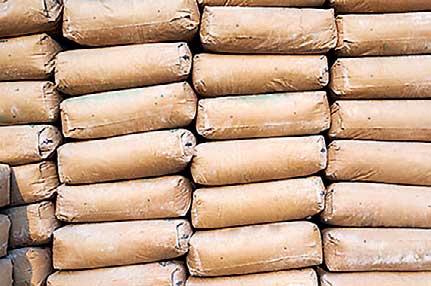Reply To:
Name - Reply Comment
Sri Lanka’s cement industry could become the latest victim of controlled prices as manufacturers are contending with input and other costs, which are rising at a level that no longer enables them to stay solvent at the current retail price for cement.
 Retail price of cement is controlled by the government, and the manufacturers are becoming financially hamstrung with multiple costs escalations as they are prevented from revisiting the selling price of a cement bag.
Retail price of cement is controlled by the government, and the manufacturers are becoming financially hamstrung with multiple costs escalations as they are prevented from revisiting the selling price of a cement bag.
Although enforced with the intention of safeguarding the end consumer, price controls have repeatedly proven counter-productive, resulting in worst conditions such as shortages of such commodities as seen from the latest episodes of household gas and milk powder as controlled prices take away the incentive for people to engage in free enterprises, which operate with profit motive.
Highlighting the challenges faced by the cement industry amid price controls, Tokyo Cement Chairman Dr. Harsha Cabral said the matter needs to be resolved quickly to ensure a steady supply of cement in future.
“….unless there is a resolution with regard to a price increase, all local cement manufacturers will face difficulties in the new financial year in meeting demand for cement,” Cabraal said in his annual letter to the shareholders.
“As cement is a price-controlled commodity, Tokyo Cement could not increase its retail prices to reflect the increased production costs,” Cabraal added.
Tokyo Cement as the country’s largest cement manufacturer has been absorbing, “a large cost increase,” stemming from rise in clinker prices, price increases associated with the depreciation of the rupee and significant increase in freight costs.
According to S.R. Gnanam, the company’s Managing Director, charter vessel rates have increased by an exponential 300 percent against their January 2020 levels and expressed dour expectations for the company’s profits during the ongoing financial year due to anticipated sustained cost increases from raw material to oil to freight.
Domestic cement manufactures have ramped up their production to make up for the decline in cement imports, largely due to a cess tax imposed last year aimed at encouraging local cement production.
According to the latest data available through May, local cement production has surged by 40.8 percent to 1,793,000 metric tonnes during the first five months over the same period last year, while the total cement use including imports have risen by 23.6 percent to 2,946,000 metric tonnes. The imports lagged vastly behind with only 3.9 percent increase to 1,153,000 metric tonnes.
Cement production and use is a close barometer of a country’s housing and construction sector vibrancy and the overall economic health. Any potential hiccups in cement supply, unless arrested well in advance, could spell trouble for a country’s economic output and incomes. During the company’s first fiscal quarter ended in June 30, Tokyo Cement reported sales of Rs.10.7 billion, up by robust 38 percent from the year earlier period. However, the company’s operating results mirrored the concerns raised by its Chairman as the operating profits slumped 94 percent to Rs.74.8 million due to faster rise in direct costs, distribution and administration costs, which could probably provide a close proxy for the rest of the industry.
The company reported earnings of 74 cents a share or Rs.296.7 million for the April-June quarter compared to Rs.1.73 a share or Rs.692.6 million in the same period last year.